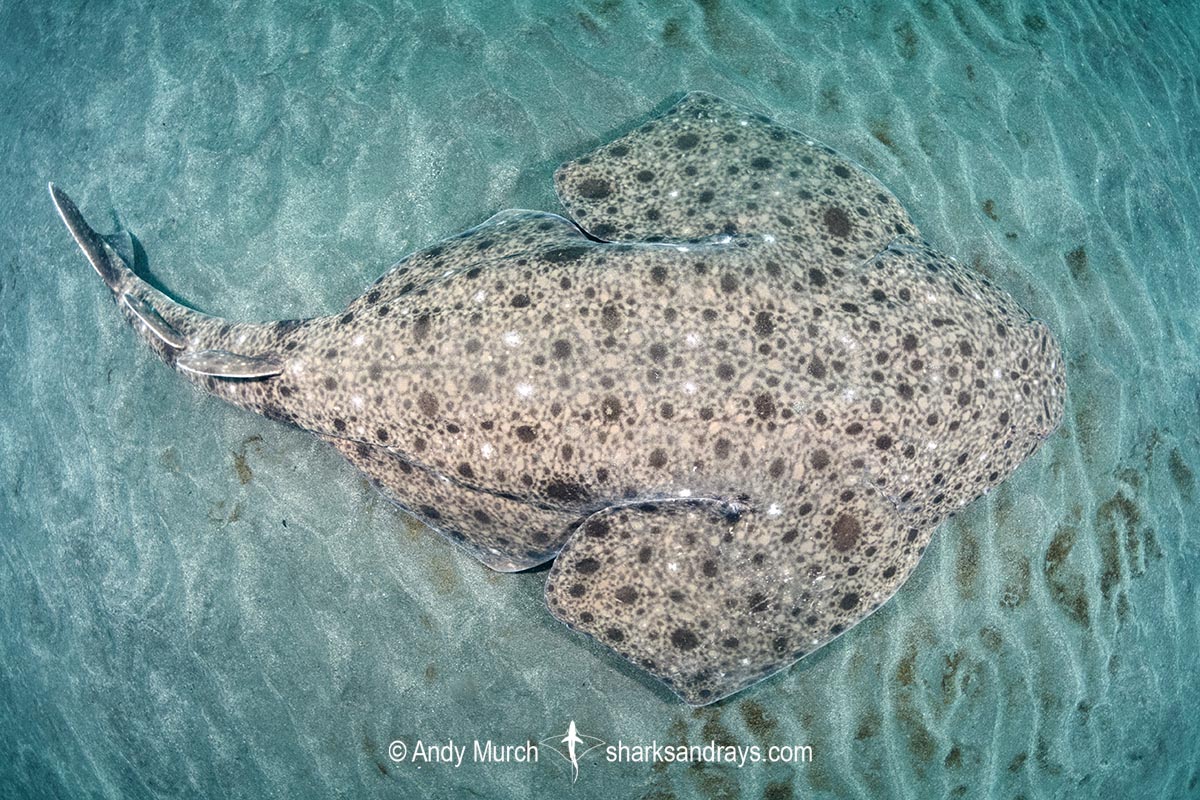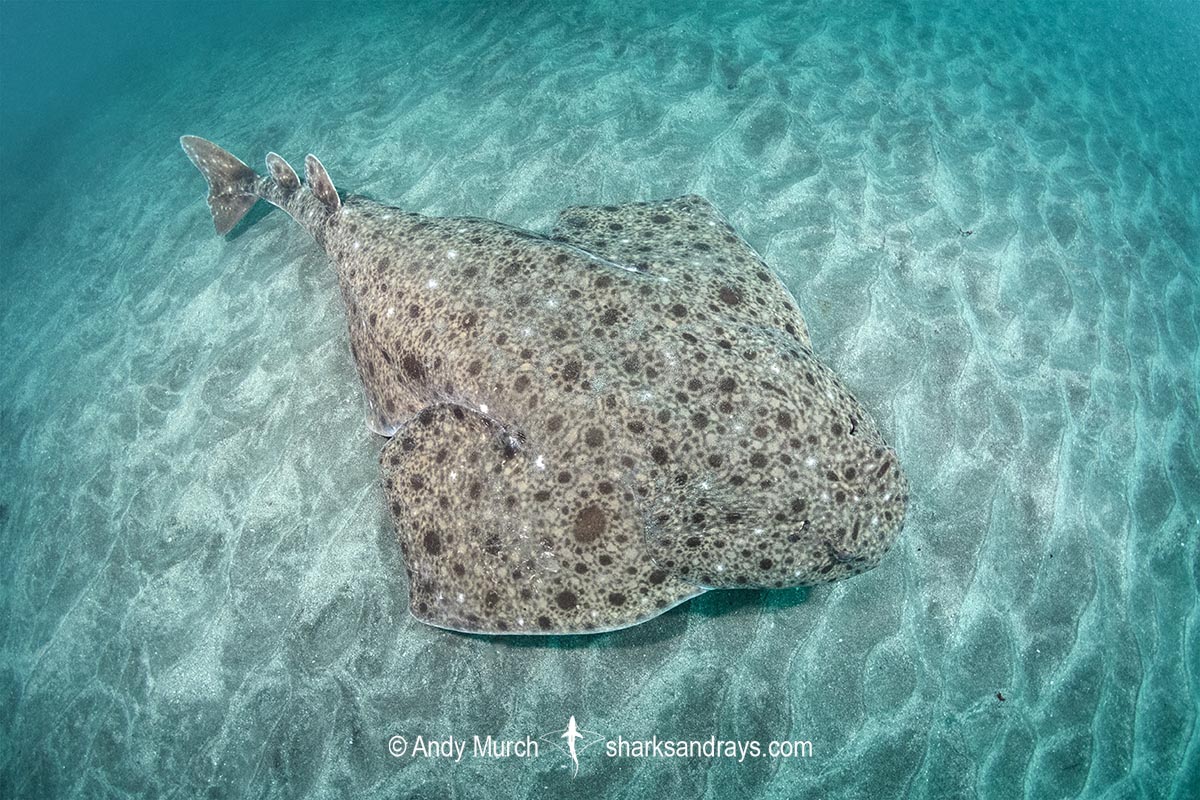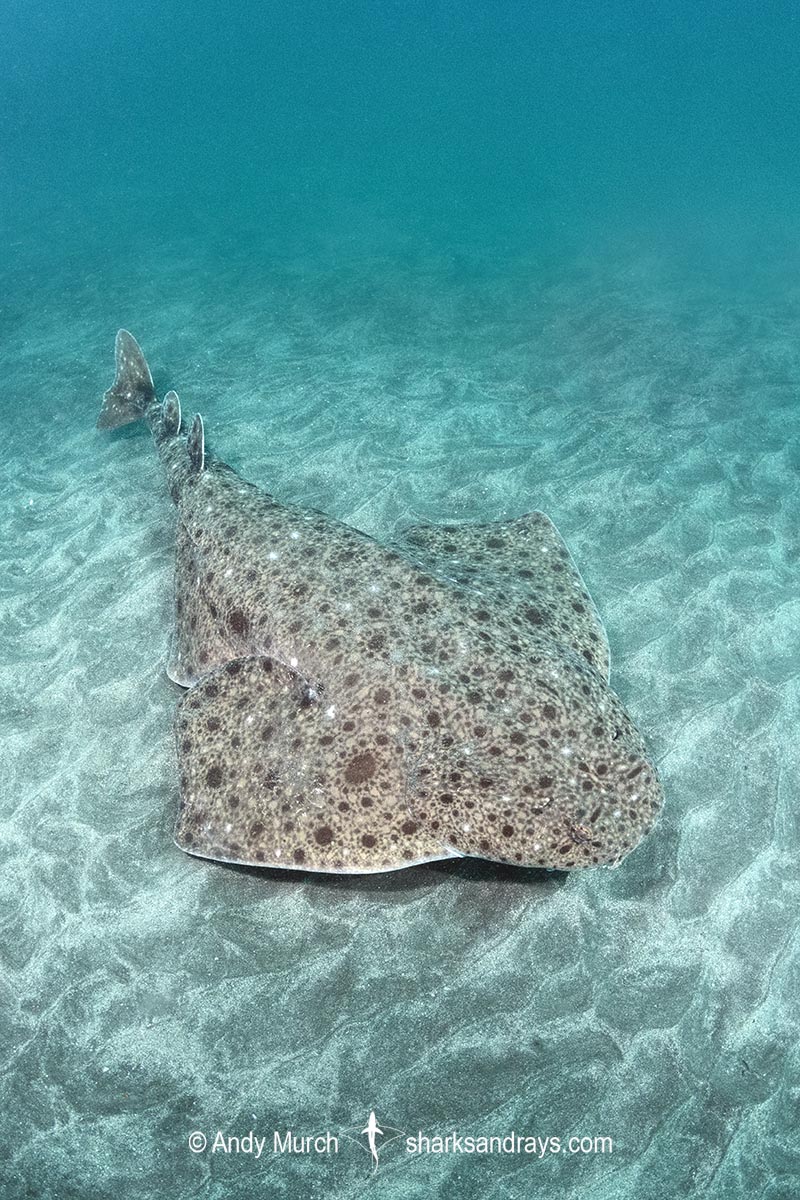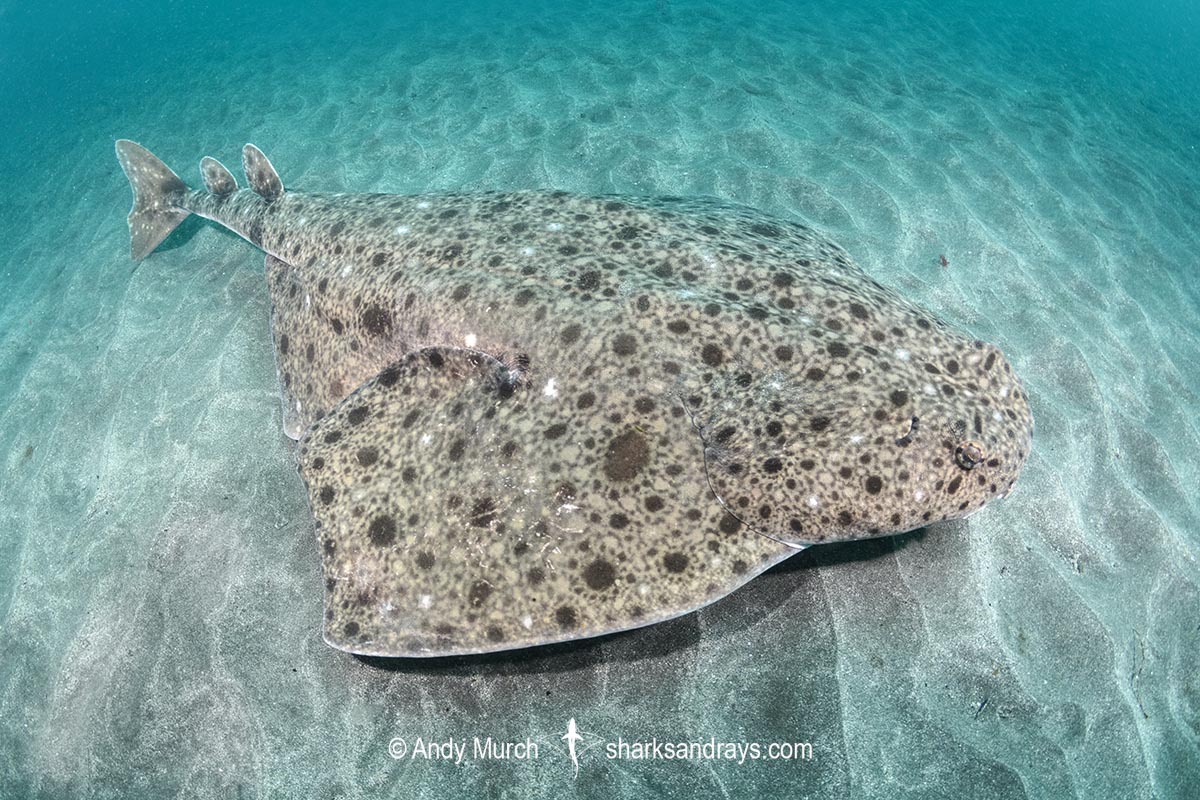Common names
Clouded Angelshark.
Binomial
Squatina nebulosa.
Synonyms
None.
Identification
A very large angelshark species with a pronounced head that is notably forward of (not inline with) the pectoral fin anterior margins. Large, tapering nasal barbells. Nasal flaps weakly fringed or smooth. Two triangular lobes laterally on head. Spiracle to eye distance less than 1.5x eye size. Slight Concavity on forehead between eyes. No large thorns. Pectoral fins wide, with obtusely angular apices and rounded rear margins.
Dorsal coloration bluish-grey to tan with a complex symmetrical pattern of greater than eye sized dark spots (and a few paired white spots) separated by thin broken dark lines. One especially large spot forms a vague ocellus on each pectoral fin. Ventrum pale, with dusky pectoral margins. Caudal keel and pectoral, dorsal, and caudal fin margin pale edged.
Size
Largest of the angelsharks. Maximum size at least 200cm. Size at birth approximately 30cm.

Conservation Status
ENDANGERED
The Clouded Angelshark (Squatina nebulosa) is a bycatch component of ground fisheries including trawl, gillnet, set net, and longline. It is generally retained for its meat and fins, and it is ground into fish meal.
Although uncommon, in some parts of Japan it is twice as abundant as its congener the Japanese Angelshark (Squatina japonica).
In Taiwan, the Clouded Angelshark is the most common squatinid seen in fish markets. Over the last 20yrs, catch rates in Taiwan appear to be stable, but likely far reduced from this species’ pre-industrial fishing biomass.
It is estimated that overall, this species has undergone a population reduction of 50-79% over the past three generation lengths (69 years).

Habitat
Temperate sandy substrates often close to monumentation such as rocky reefs. Inshore and continental shelf. Inshore to at least 330m.
Distribution
Northwest Pacific / Sea of Japan. Found from Hokkaido in northern Japan to Taiwan, including the Ryukyu Archipelago, North and South Korea and China.
Reproduction
The clouded angelshark is a viviparous species. 12-20 pups per litter.
Diet
Clouded angelsharks feed on benthic fishes and cephalopods.
Angel sharks are ambush predators that lay on the substrate partially covered by sand. When a fish swims within range, the angelshark explodes upwards from its concealment, mouth agape and clamps down on its prey.
Behavior
Clouded angelsharks migrate into shallow bays during the winter months.
Reaction to divers
Fairly easy to approach. Remains motionless, relying on camouflage. May occasionally bolt if molested. Will bite if hands stray too close to mouth.
Diving logistics
The clouded angelshark is occasionally seen by divers during the winter months in southern Honshu and much more rarely elsewhere e.g. Kagoshima on Kyushu.
Between January and April each year, there are usually a handful of sightings around Mikomoto Island off the east coast of southern Izu.
Oshima Island (positioned between the Izu and Boso Peninsulas) is another spot where sightings occur, but arranging boat dives there is difficult.
What’s new
View our full list of updates
Similar species
Japanese Angelshark Distinguished by its less projected head and more subtle pattern of irregular golden to reddish-brown spots and blotches.







